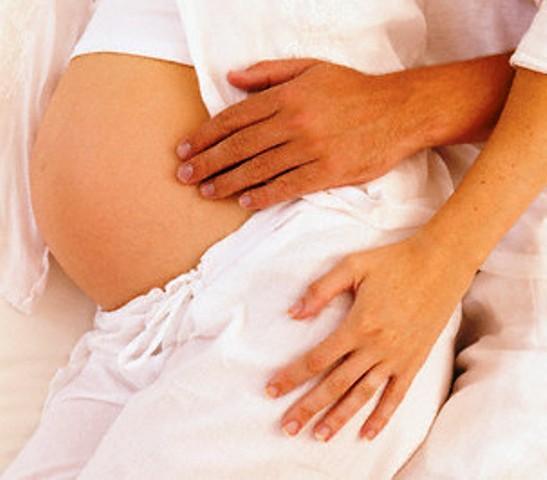Are you trying to conceive? Understanding your menstrual cycle and knowing when you are most fertile can increase your chances of getting pregnant. In this article, we will discuss the best days for making a baby, how to track your menstrual cycle, and other factors that can affect your fertility.
Understanding Your Menstrual Cycle
Before we dive into the best days for making a baby, it's important to understand your menstrual cycle. The menstrual cycle is the monthly process by which a woman's body prepares for pregnancy. It is controlled by hormones in the body and can vary in length from person to person. The menstrual cycle consists of several phases, including:
- Menstrual phase (days 1-5)
- Follicular phase (days 6-14)
- Ovulation (day 14)
- Luteal phase (days 15-28)
Ovulation: The Key to Getting Pregnant
Ovulation is the release of an egg from the ovary. It occurs once a month, approximately 14 days before the start of your next period. Ovulation is the key to getting pregnant because it's the time when the egg can be fertilized by sperm. Once the egg is released, it can survive for 12 to 24 hours.
The Best Days for Making a Baby
The best days for making a baby are the days leading up to and including ovulation. This is because sperm can survive in the female reproductive system for up to five days. So if you have sex in the days leading up to ovulation, the sperm can still be alive when the egg is released.
There are several methods you can use to predict when you are ovulating. These include:
Tracking Your Menstrual Cycle
By tracking your menstrual cycle, you can estimate when you are ovulating. Ovulation typically occurs 14 days before your next period. If you have a 28-day cycle, ovulation occurs on day 14. If you have a 35-day cycle, ovulation occurs on day 21.
Ovulation Predictor Kits
Ovulation predictor kits (OPKs) are available over-the-counter and can help you predict when you are ovulating. They work by detecting a surge in luteinizing hormone (LH) in your urine, which occurs 24 to 36 hours before ovulation.
Basal Body Temperature
Your basal body temperature (BBT) is your body temperature when you are at rest. Your BBT increases slightly after ovulation. By tracking your BBT over time, you can estimate when you are ovulating.
Other Factors That Can Affect Fertility
While knowing your best days for making a baby can increase your chances of getting pregnant, there are other factors that can affect fertility. These include:
Age
Fertility declines as you get older. Women are most fertile in their 20s and early 30s.
Lifestyle Factors
Smoking, excessive alcohol consumption, and being overweight or underweight can all affect fertility.
Health Conditions
Certain health conditions, such as polycystic ovary syndrome (PCOS), can affect fertility.
Conclusion
Knowing your best days for making a baby can increase your chances of getting pregnant. By tracking your menstrual cycle, using ovulation predictor kits, and monitoring your basal body temperature, you can estimate when you are ovulating. Remember that fertility declines with age, and lifestyle factors and health conditions can also affect fertility. If you are having trouble getting pregnant, talk to your healthcare provider.
How to Track Your Menstrual Cycle
Tracking your menstrual cycle can help you determine when you are most fertile. You can use a variety of methods to track your cycle, including:
- Calendar method: Keep a calendar and mark the first day of each menstrual period. Count the days between each period to determine the length of your cycle. Ovulation typically occurs 14 days before the next period.
- Basal body temperature method: Take your temperature every morning before getting out of bed. Your temperature will rise slightly after ovulation.
- Cervical mucus method: Observe changes in cervical mucus throughout your cycle. The mucus becomes thin and stretchy around ovulation.
- Ovulation predictor kits: These kits detect the surge in luteinizing hormone that occurs just before ovulation.
FAQs
What is the best time of the month to conceive a baby?
A: The best time to conceive a baby is during ovulation, which typically occurs around 14 days after the first day of your last menstrual period. However, this can vary depending on the length of your menstrual cycle.
How can I track my ovulation?
A: There are several methods you can use to track ovulation, including tracking your menstrual cycle, monitoring your basal body temperature, and using ovulation predictor kits. Your healthcare provider can also provide guidance on tracking your ovulation.
How long does ovulation last?
A: Ovulation typically lasts for 12 to 24 hours. However, the fertile window, which is the time period during which you are most likely to conceive, can last up to six days. This includes the day of ovulation and the five days leading up to it.
Can I conceive outside of my fertile window?
A: It is possible to conceive outside of your fertile window, but it is less likely. Sperm can survive inside the female body for up to five days, so if you have sex during the days leading up to ovulation, there is a chance that sperm can fertilize an egg after ovulation occurs.
Can stress affect my chances of getting pregnant?
A: Stress can potentially affect your chances of getting pregnant by disrupting your menstrual cycle and ovulation. However, the effect of stress on fertility varies from person to person and depends on various factors such as the type and duration of stress.










